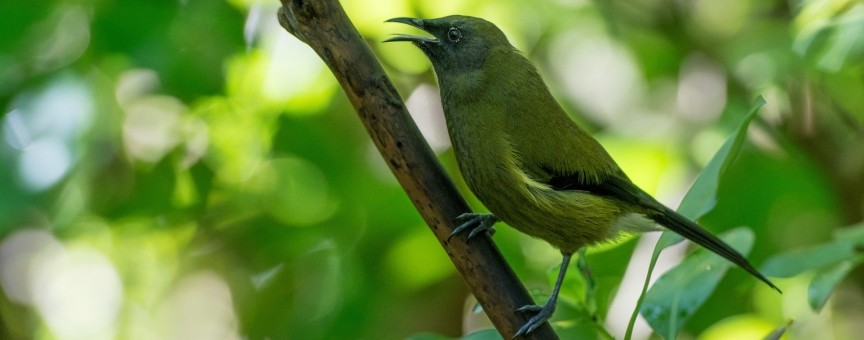20 year project brings more birdsong to valley
A 20 year native bird monitoring programme by the Department of Conservation has confirmed findings that sustained predator control has positive effects on native bird numbers, the New Zealand Herald reports.
The programme, held in DOC’s longest-studied area Landsborough valley in South Westland, found that numbers of seven species of birds steadily increased in the past 20 years in response to sustained suppression of rats, stouts, and possums. Four other species have stayed stable.
Predator control in the Landsborough valley began in 1998, and since then six aerial 1080 operations and valley-wide trappings have been carried out by DOC.
The monitoring programme also involved a team of bird experts doing 175 five-minute bird counts each spring at fixed points in the valley, providing an index of relative bird numbers.
It’s been giving conservation scientists insights into what approaches work best in eradicating predators, and will go a long way towards helping to achieve New Zealand’s 2025 Pest Free goal.
Conservation and Land Information Minister Eugenie Sage says recent funding allowances for DOC of $181.6 million over the next four years are a sign of New Zealand’s longstanding commitment to the International Convention on Biological Diversity, and will continue to support sustained research upholding the 2025 Pest Free initiative.
“These results highlight that where we control pests over whole valleys and forests, we can turn around the fortunes of our native birds and help address our biodiversity crisis where 82% of our birds are threatened or at risk of extinction.”
2017 research carried out by the Biological Heritage National Science Challenge project surveyed people’s perspectives of new and emerging methods of pest and predator control, with 85% of New Zealanders agreeing that investment in pest control is beneficial for future generations.
You can read more about DOC’s research programme in the New Zealand Herald article.





